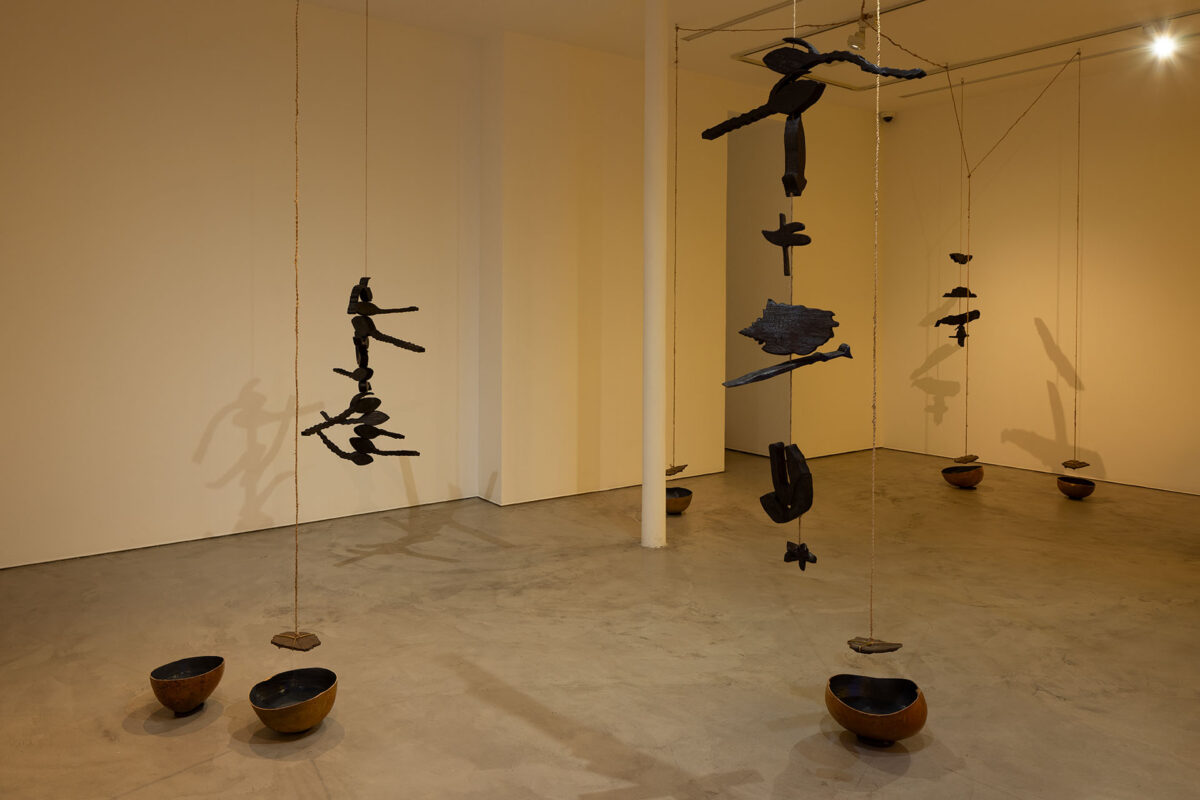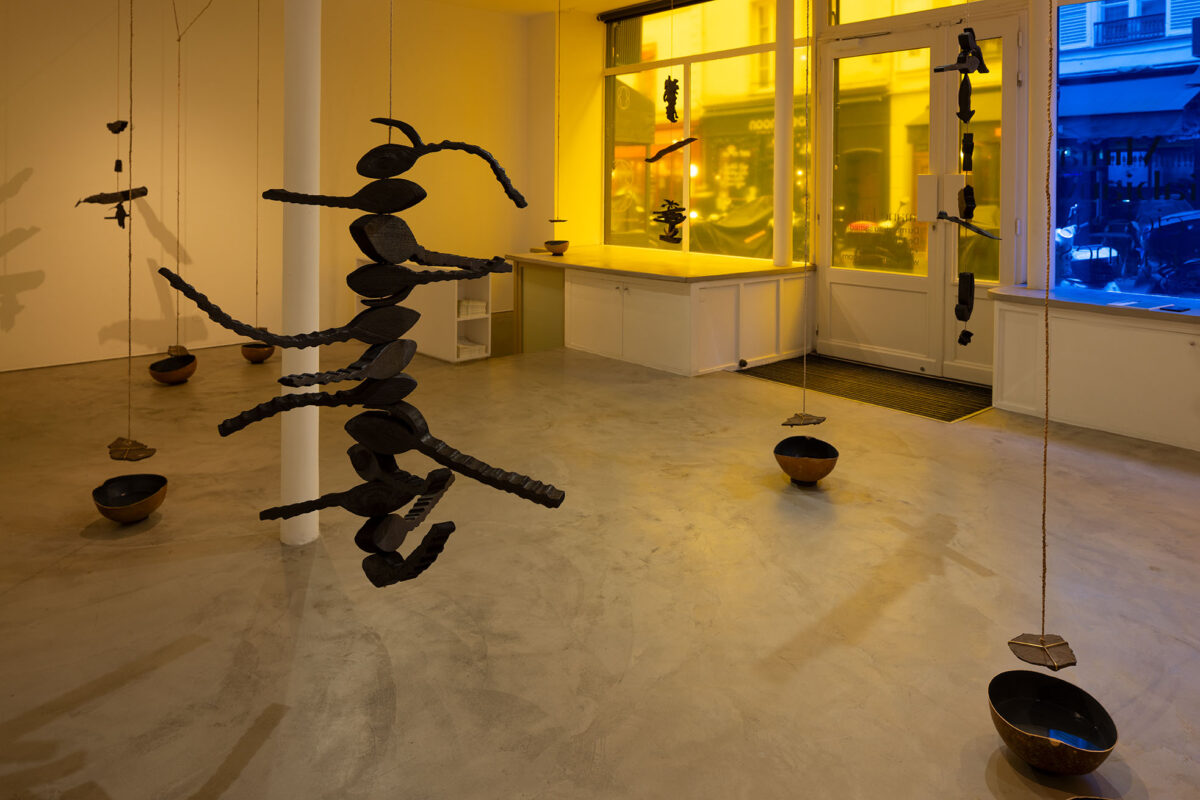


the sky with rooted-eyes
Through her practice, which oscillates between art and pedagogy, Minia Biabiany explores the lands, languages, and identities of the Caribbean, creating spaces of resistance and healing in response to the impacts of colonialism.
For the sky with rooted-eyes, Biabiany creates a new constellation — the frog — traced from the night sky of Guadeloupe at the time of the exhibition. Each star of the constellation is embodied in a ceramic sculpture, and together they outline the image of this nocturnal amphibian, whose song signals the shift from day to night. The sculp- tures are reflected in water-filled calabashes placed on the ground. This creates a dynamic interplay, a mirroring between water, earth, and sky, between the cosmic and the everyday.
Inspired by the Blue Crab constellation—one of the few traditional constellations of the Kalina people that has endured through the ages to reach us, and whose rise above the horizon signals the solar cycle —Biabiany reimagines celestial cycles from her own perspective. Her interpretation provides us with new ways to position and orient human bodies in space.
The works of the installation are interconnected by ropes braided from banana fibers, interspersed with organic sculptures of charred wood, each representing distinctive elements of Guadeloupe’s natural environment. Braiding, which is central to Biabiany’s practice, becomes both a storytelling tool and a quest for fresh metaphors to express her relationship to the land, and an act of resistance against the erasure of language. Rooted in orality and deliberate slowness, it serves as a thread for reconsidering how we structure narrative and language.
The banana flower—a recurring motif in the installation—embodies the duality of Guadeloupe’s history. It simultaneously symbolizes the harmful health effects of chlordecone1 poisoning and the medicinal properties of the plant itself. Through this contrast, Biabiany explores the land’s ability to reclaim its own memory and heal the wounds of colonialism, creating a space where memory, poetry, and politics converge.
Minia Biabiany
Lives and works in Guadeloupe. Her work explores Caribbean narratives, processes of decolonization, and the connections between language, body, and territory, through a practice combining installations, videos, and pedagogy. Among her upcoming solo exhibitions are Semillero Caribe x Persona Curada (ENSAD, Paris, 2025), the Mercosur Biennial (Porto Alegre, 2025), the São Paulo Biennial, as well as a duo exhibition with Étienne de France (Musarth, Guadeloupe, 2025; KunstMeran, Italy, 2025). In November 2025, she will finalize the video created as part of the Han Nefkens Prize.
Her work has been featured in several exhibitions, including Dlo a rasin (James Madison University, Virginia, 2024), difé at the Palais de Tokyo (2022), the 10th Berlin Biennial, TEOR/éTica (San José, Costa Rica), Witte de With (Rotterdam), Cráter Invertido (Mexico City), SIGNAL (Malmö), the Memorial ACTe (Guadeloupe), the Centro León (Santiago, Dominican Republic), the Corcoran (Washington, D.C.), and La Verrière (Brussels). She also received the Sciences Po Contemporary Art Prize in 2019.
Her first multilingual monograph, Ritmo Volcan, was published by Temblores editions.
In 2016, she initiated the collective project Semillero Caribe in Mexico and continues her pedagogical research in the Caribbean through Doukou, a platform for experimentation that explores Caribbean authors’ concepts through the body and sensory experience.
[1] This toxic pesticide, used from 1972 to 1993 on banana plantations in Martinique and Guadeloupe, contaminated the soils and waters of these territories, leaving a lasting impact on both the population’s health and the local ecosystem.


